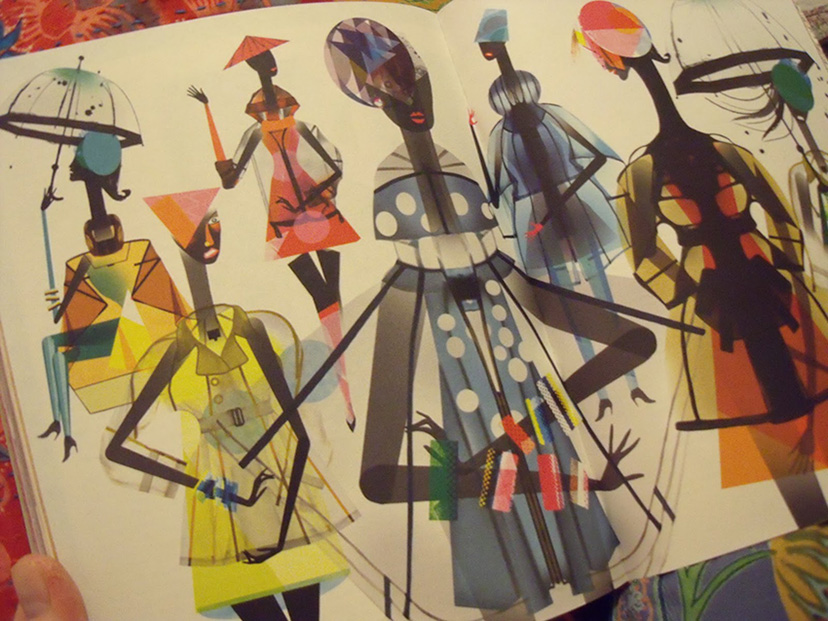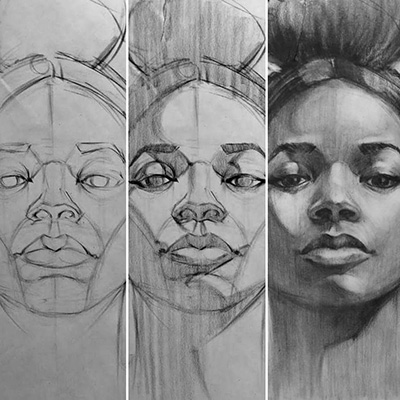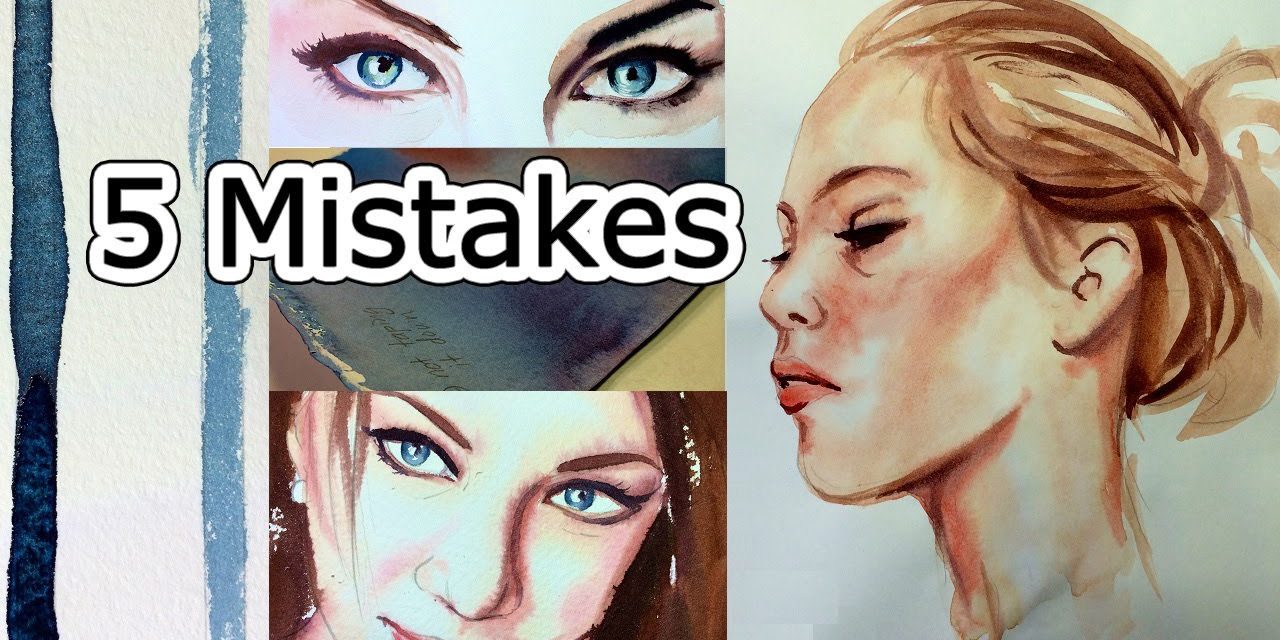Drawings can be as realistic as we have the idea and imagination for this and no software can help you to draw a good portrait if you do not know some basics. Still, there are illustrators like Natsuki Otan that stresses out the importance of practicing and knowing some common mistakes that illustrators do. In this article, we will explain the two basic mistakes you should avoid when working on a portrait. These can totally ruin your portrait and make it everything but realistic, so keep these in mind. No matter if you work on ink portrait of a young Graham Coxon or you trying to portrait your brother, these mistakes you must be aware of.
The hair must be “alive”
 This is the thing that ruins the perfect portrait and a lot of artists simply forget to tweak this, even though it is not a big deal to fix. As you know, hair is alive and when the wind blows, it becomes living as the wind moves it. Of course, you cannot make an animation, but you can improve your shadows. As the hair grows, the bigger it becomes, the more shadow it casts on the area below it/scalp.
This is the thing that ruins the perfect portrait and a lot of artists simply forget to tweak this, even though it is not a big deal to fix. As you know, hair is alive and when the wind blows, it becomes living as the wind moves it. Of course, you cannot make an animation, but you can improve your shadows. As the hair grows, the bigger it becomes, the more shadow it casts on the area below it/scalp.
 Do not forget to paint this area a bit darker so you could create an illusion. For example, when you working on a moustache, note that there are some gaps between the hairs. This of course depends on the level of light and the distance from it, but generally, you can recognize the darker area. Therefore, never forget to make the part below hair a bit darker.
Do not forget to paint this area a bit darker so you could create an illusion. For example, when you working on a moustache, note that there are some gaps between the hairs. This of course depends on the level of light and the distance from it, but generally, you can recognize the darker area. Therefore, never forget to make the part below hair a bit darker.
Wrinkles must have a depth
Natsuke Otani often explains that people cannot get realistic portraits as they misjudge the wrinkles on the face. These are crazy storytellers and they must be “bolded” with darker lines. When creating these, always start with the darkest variation and then start to lighten these until you get the realistic look. Of course, this is something you must work on and practice for a long time before you start understanding how to pull these out.
One of the best trainings for this is to take a piece of paper and draw a single line across the paper. Now, try to make the edges softer, adding a gradation in both ways. This will help you to achieve the realistic drawing of the wrinkles in portrait drawings.
See Natsuki’s other commercial work here:
- Compression Sock Sizes https://comprogear.com/compression-sock-sizes/
- Compression Socks for Gout https://comprogear.com/compression-socks-for-gout/
- Compression Socks for Nurses https://comprogear.com/compression-socks-for-nurses/


 This site is the complete work of an experienced illustrator by name Natsuki Otani. “A record of my journeys, both physical and imagined” is his latest illustrated book where he explained his journey from the beginnings, to the point where he can accept and reject the offers. The book will also be presented in the upcoming Secret Hideaway en 2019 exhibition. The book will cost a fair price at the exhibition but will be free to download after this event.
This site is the complete work of an experienced illustrator by name Natsuki Otani. “A record of my journeys, both physical and imagined” is his latest illustrated book where he explained his journey from the beginnings, to the point where he can accept and reject the offers. The book will also be presented in the upcoming Secret Hideaway en 2019 exhibition. The book will cost a fair price at the exhibition but will be free to download after this event.